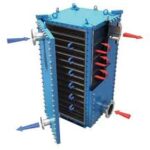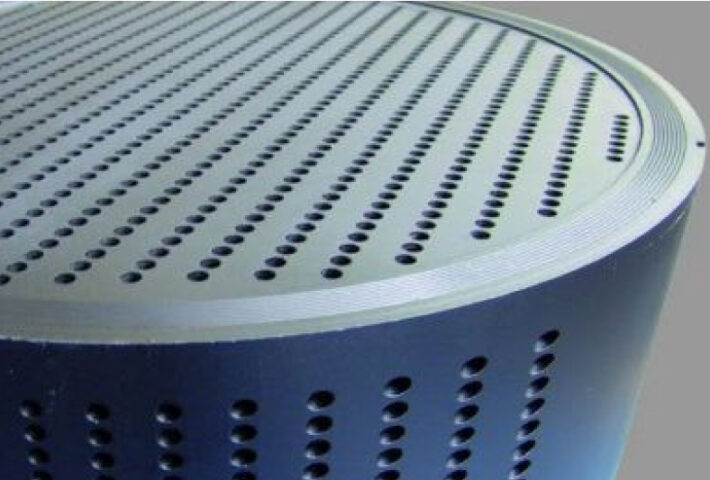
Thurne has delivered heat exchangers to highly corrosive processes for several decades. Today we offer the full range of heat exchangers suitable for almost any application, from water treatment, energy recovery, corrosive processes to dirty fluids. Our heat exchangers are available from stainless steel to a variety of special materials, such as graphite, silicon carbide tantalum, and titanium.
We are continuously looking for new technologies and we would like to announce that we have further expanded our product portfolio by the cooperation with the German supplier GAB Neumann.
GAB Neumann, which was recently acquired by our long-term partner Mersen, complements Mersen’s supply of highly corrosion-resistant process equipment.
GAB Neumann’s graphite and silicon carbide products include:
-
-
- annular groove
- plate
- bloc and
- shell & tube heat exchangers
-
that can be used as coolers, heaters, interchangers, absorbers, condensers, or evaporators.
Below is a short introduction to the different types of heat exchangers that Thurne offers:
SHELL & TUBE (S&T)
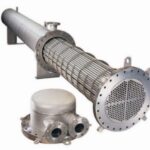 This is a simple and robust design that enables use in the highest temperatures and pressures. Their strong structure gives high reliability and a long lifetime with a low maintenance cost, which compensates for the larger footprint. They are suitable for heating, cooling, condensing, evaporating, or absorbing.
This is a simple and robust design that enables use in the highest temperatures and pressures. Their strong structure gives high reliability and a long lifetime with a low maintenance cost, which compensates for the larger footprint. They are suitable for heating, cooling, condensing, evaporating, or absorbing.PLATE
Plate heat exchangers have a compact structure and excellent heat transfer capabilities, which make them a good choice for almost any process. Depending on temperature, pressure, corrosive conditions, and cleaning requirements, several types of plate heat exchangers are available.
WELDED PLATE
Welded plate are compact and robust units that are made for more challenging conditions than the other plate technologies. Each plate is welded together and installed in a robust frame with doors, which can be opened easily. All welds can be inspected and repaired.
Welded plate heat exchangers are available in stainless steel, duplex, nickel alloys, and titanium in unit sizes of 2.5 to 625 m2. They are used for heating, cooling, and condensing as well as energy recovery. There are different shapes of plates and gaps between the plates, all depending on the process and mechanical cleaning requirements.
S-TYPE
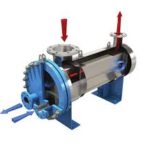
S-type is available in stainless steel, duplex, nickel alloys, and titanium. The typical application is condensing, either as independent units or integrated to columns.
PLATE & GASKET

SEMI WELDED PLATE

BLOCK
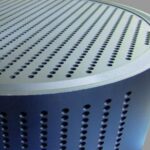
ANNUAL GROOVE (SPIRAL)

They are used for heat recovery, heating, and cooling of applications such as fine chemicals, APIs, flavors and fragrances, and vitamins.
ANNUAL GROOVE PARTIAL

These are typically used in applications such as Fine chemicals, APIs, Flavors and fragrances, vitamins, and spent acid treatment processes.
COIL
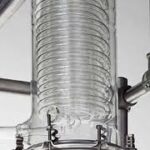 Coil type heat exchangers made of borosilicate 3.3 glass are single-piece units where the tube coil is fused to the shell so that no seals are required. This eliminates any risk of cross-contamination between the service medium and the product. These are easy to operate as the perfectly smooth and transparent glass surfaces prevent deposits and optimizes process monitoring.
Coil type heat exchangers made of borosilicate 3.3 glass are single-piece units where the tube coil is fused to the shell so that no seals are required. This eliminates any risk of cross-contamination between the service medium and the product. These are easy to operate as the perfectly smooth and transparent glass surfaces prevent deposits and optimizes process monitoring.
Carolina Nealis
Product Sales ManagerCAROLINA NEALIS
Product Sales Manager
B.Sc. Chemical Engineering
M.Sc. Macromolecular Materials
PHONE NUMBER
Mobile: +46 (0) 735985448

Veronica Gyllenram
Product Sales ManagerVERONICA GYLLENRAM
Product Sales Manager
B.Sc. Biology and Molecular Biology
PHONE NUMBER
Direct phone +46 8 557 693 46
Mobile +46 76 517 23 8311

Olli-Pekka Tikkanen
Product Sales ManagerOLLI-PEKKA TIKKANEN
Product Sales Manager
B. Sc. Chemical Engineering
PHONE NUMBER
Mobile: +358 40 730 8464

Andris Putnins
Product Sales ManagerANDRIS PUTNINS
Product Sales Manager
B.Sc. Chemical Engineering, M.Sc. Materials Science
PHONE NUMBER
Direct Phone: +371 6616 3763
Mobile: +371 2689 6799

Rafi Malekzadeh
Head of Sales, DenmarkRAFI MALEKZADEH
Head of Sales, Denmark
B.Sc. Global business engineering
PHONE NUMBER
Direct Phone: +45 89 88 35 00;
Mobile: +45 31 61 81 88




